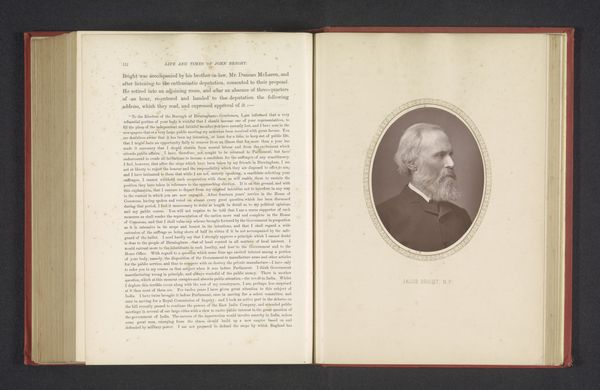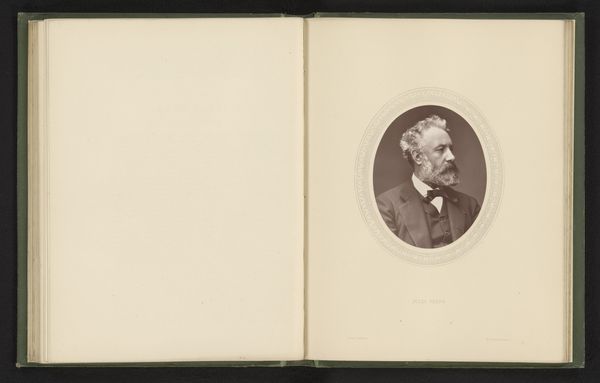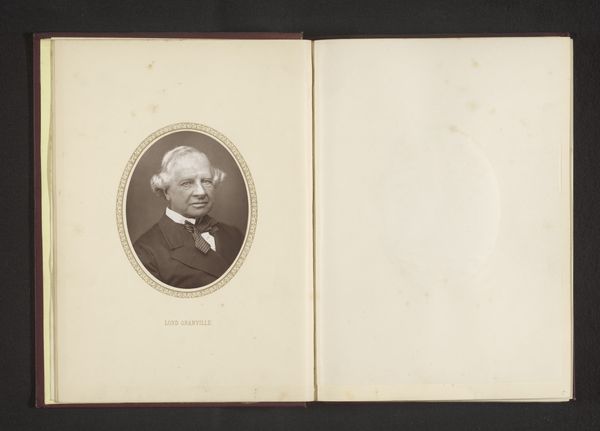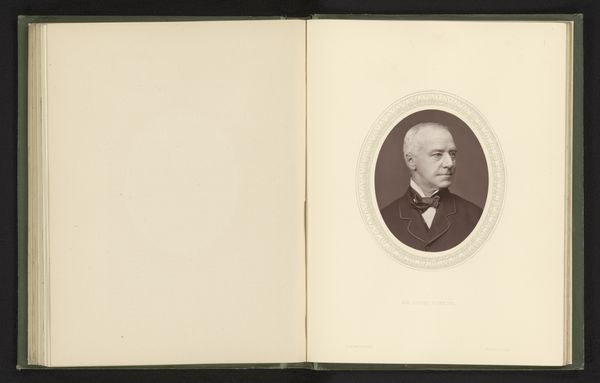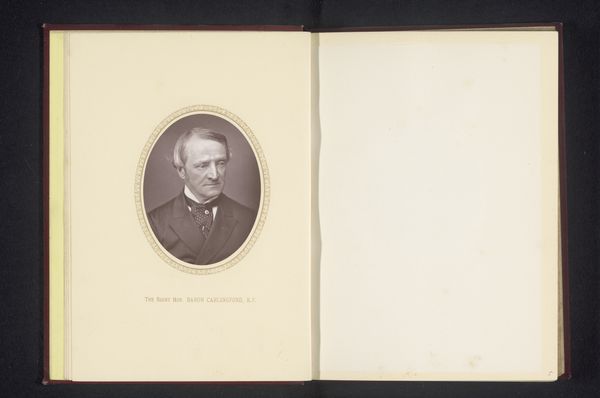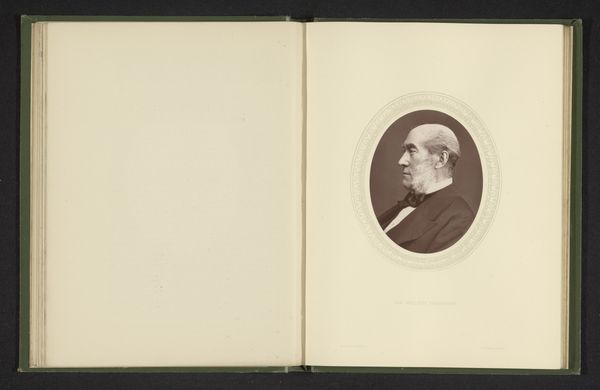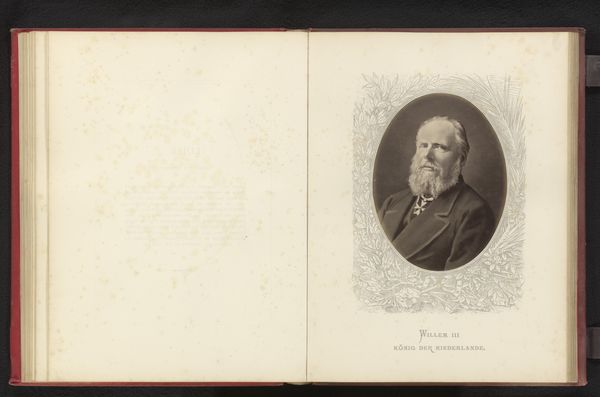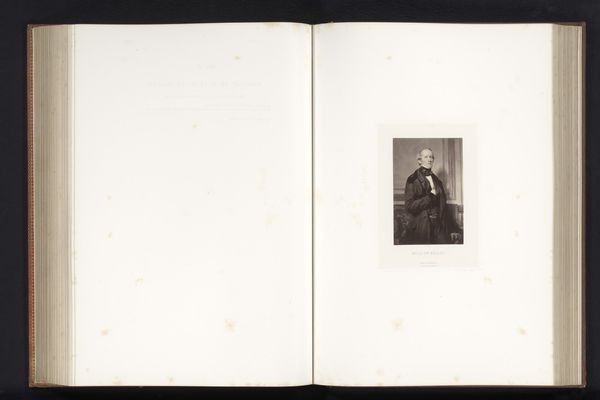
photography, albumen-print
#
portrait
#
photography
#
albumen-print
Dimensions: height 110 mm, width 86 mm
Copyright: Rijks Museum: Open Domain
This is a portrait of John Wodehouse, The Earl of Kimberley, produced by Arthur James Melhuish in the late 19th century. It's a photograph, an early example of reproducible image-making technology, made by capturing light on a chemically-sensitized surface. The photographic process collapses the traditional hierarchy between artist and artisan. The photographer needs technical skill, of course, but the final image is also determined by the machinery of production. Consider the lens grinding, the manufacturing of photographic plates, and the printing process itself. This all stands in contrast to the unique, hand-wrought quality we associate with painting or sculpture. The tonal range of the photograph, its subtle gradations of light and shadow, is a direct result of the chemical processes involved. The very act of capturing an image through a lens and fixing it on paper democratizes portraiture. The rise of photography allowed for wider access to representation, subtly shifting the social dynamics of art production and consumption.
Comments
No comments
Be the first to comment and join the conversation on the ultimate creative platform.
